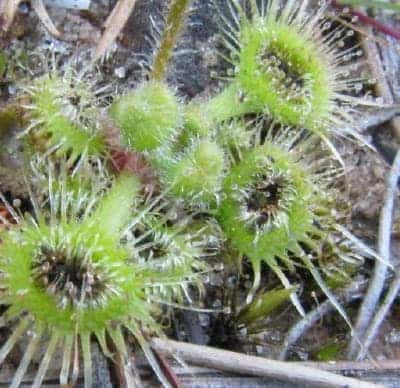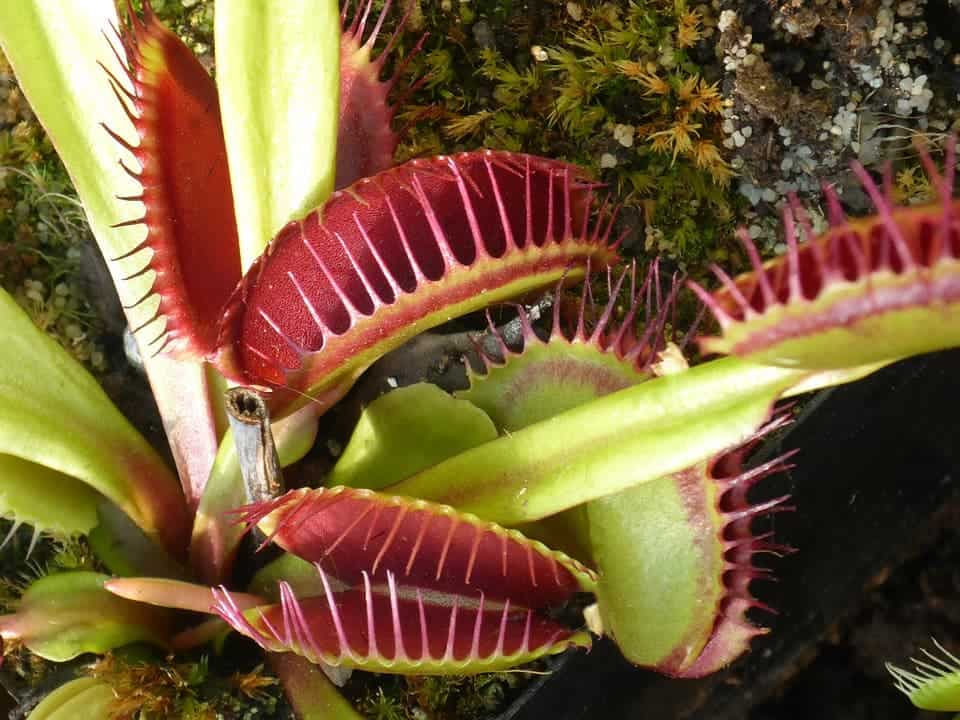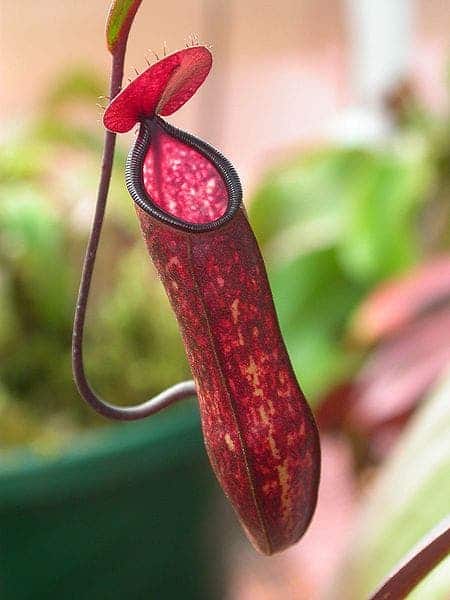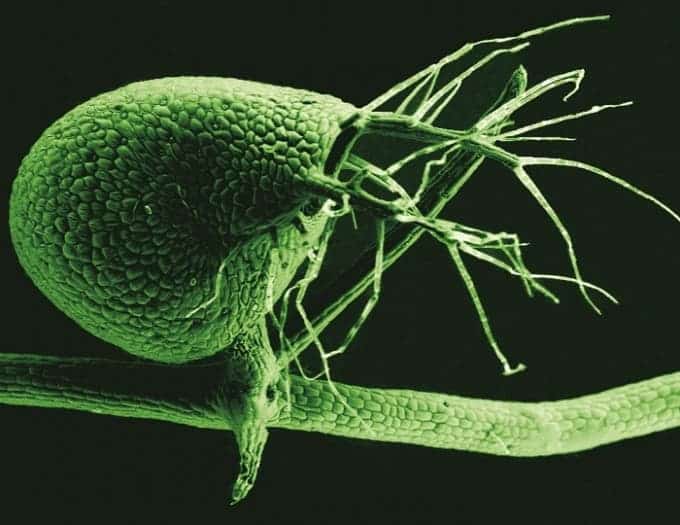
A small sundew, carnivorous plant native to Australia has amazed scientists with its unique ability of fling prey into its trap, where it is digested by the plant. The biologists studying the plant conclude that it has one of the fastest and most spectacular trapping mechanisms known among carnivorous plants.
Found in southern Australia, the Drosera glanduligera was found to posses fast-moving snap tentacles, which propel prey into the plant’s leaf trap, where it is captured and digested. Leaf traps are rather common for carnivorous plants, however the second type of leaf protrusions that radiate outward have been puzzling researchers for years.
Only recent experiments have shown that the Drosera g.’s tentacles, which can sense prey, catapult insects directly onto the glue tentacles at the plant’s center. Researchers believes this behavior is an interesting evolutionary treat. Considering that the plant is fast growing and short lived (less than a year), it requires larger or more insects to feed on. As its environment isn’t subjected to change, it can afford to pay the heavy cost of evolving an extra pair of catapult tentacles.
“Such plants are of particular interest to plant biologists because of their sophisticated and complex structural and mechanical adaptations to carnivory”, says Thomas Speck, lead author on the study.
Findings appeared in the journal PLoS One.






